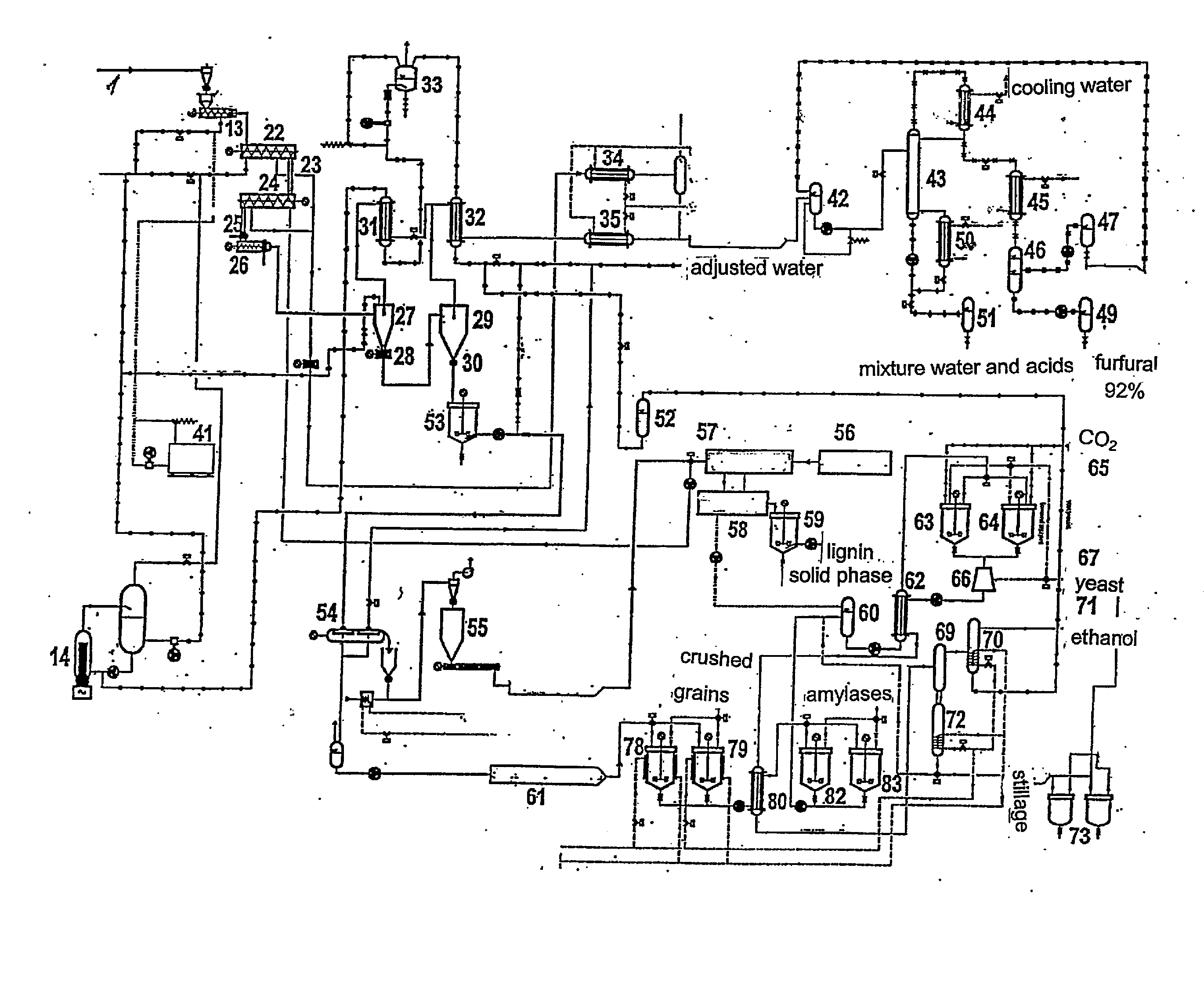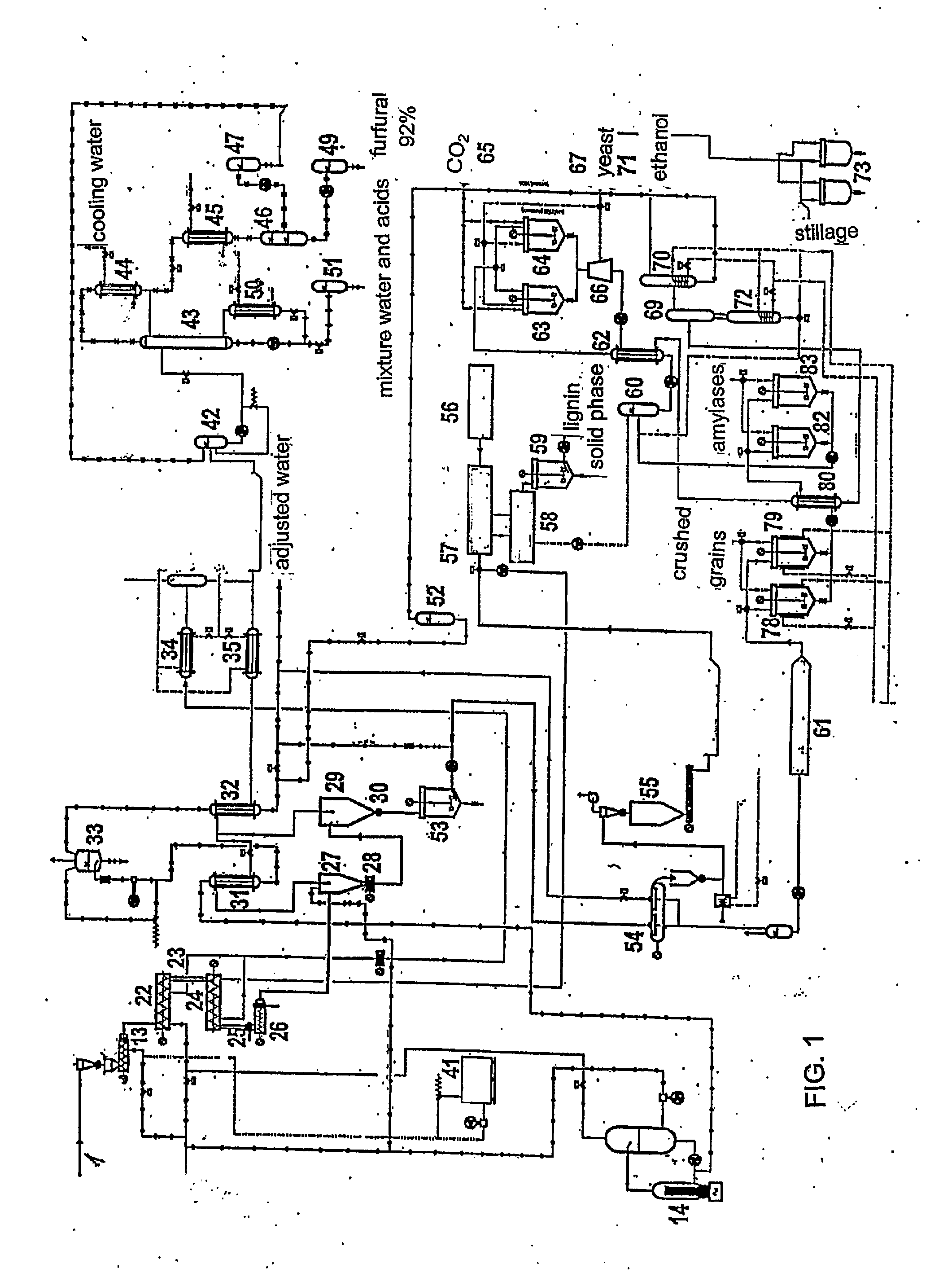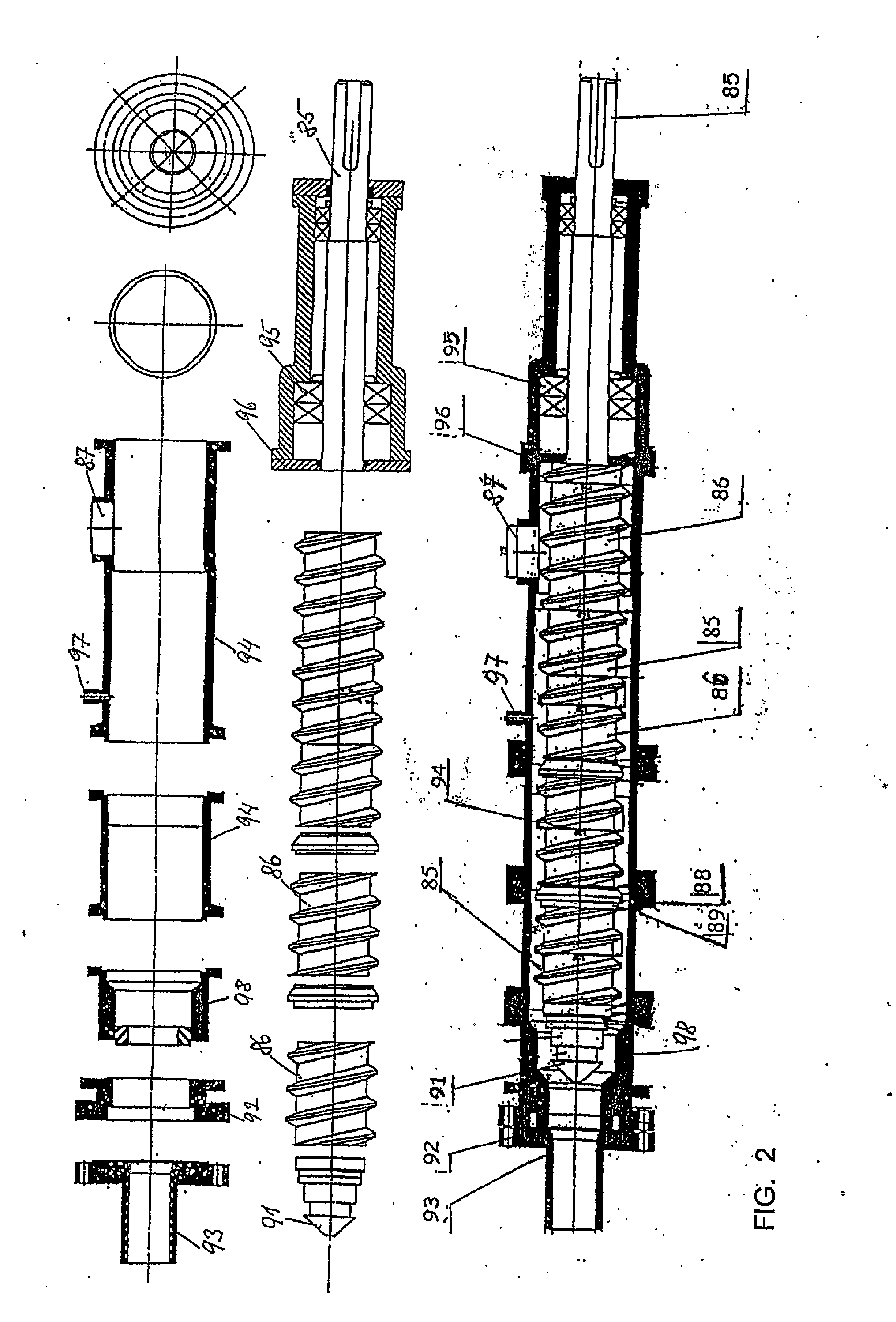Method And Devices For The Continuous Processing Of Renewable Raw Materials
a technology of renewable raw materials and raw materials, applied in the field of lignocellulosic material processing, can solve the problems of a large trade balance deficit, a potential barrier to economic and social development of most regions, and a deficiency in fossil raw materials, and achieve the effect of breaking even, and reducing the cost of production
- Summary
- Abstract
- Description
- Claims
- Application Information
AI Technical Summary
Benefits of technology
Problems solved by technology
Method used
Image
Examples
example no.1
Example No. 1
[0127] This example has been chosen for processing of wheat frumentaceous straw, containing 7 to 10% of water. Example No. 1 has been chosen for a commercial plant with a medium processing capacity of 1100 kg of straw per hour, that is 7200 tons of processed input raw material over 300 working days. The device in picture 1 contains 8 working sets: 01—Raw material preparation, 02—Heating circuit, 03—Hydrolysing part, 04—Separation of furfural and acids, 05—Separation of the solution of sugar and solid unreacted phase, 06—Enzyme hydrolysis of the unreacted cellulose. Hydrolysing and enzyme glucose merge into one sugar product, which is—at the selling price 6 to 7 K{hacek over (c)} / kg—a well marketable product, or is further led into the tank for the preparation of the fermentative medium of set 07—for the production of ethanol; set 08 is designed for collection of carbon dioxide.
[0128] Set 01 Preparation of the input raw material. The main raw material in this stage is p...
PUM
| Property | Measurement | Unit |
|---|---|---|
| pressure | aaaaa | aaaaa |
| temperature | aaaaa | aaaaa |
| temperature | aaaaa | aaaaa |
Abstract
Description
Claims
Application Information
 Login to View More
Login to View More - R&D
- Intellectual Property
- Life Sciences
- Materials
- Tech Scout
- Unparalleled Data Quality
- Higher Quality Content
- 60% Fewer Hallucinations
Browse by: Latest US Patents, China's latest patents, Technical Efficacy Thesaurus, Application Domain, Technology Topic, Popular Technical Reports.
© 2025 PatSnap. All rights reserved.Legal|Privacy policy|Modern Slavery Act Transparency Statement|Sitemap|About US| Contact US: help@patsnap.com



